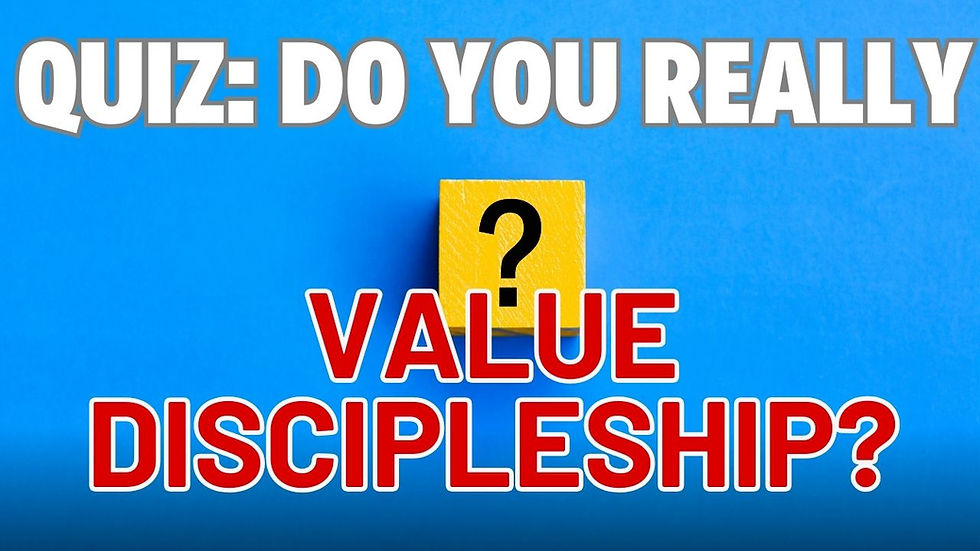Trunk or Treat Case Study: An Oklahoma Church Creatively Proclaims the Gospel on Halloween
- Darrell Stetler II
- Jul 1, 2024
- 3 min read
Updated: Aug 21, 2024

Background
In South Oklahoma City, a small church led by Pastor Darrell Stetler II has made significant strides in community engagement through a creative and gospel-centered outreach event: Trunk or Treat. Pastor Stetler has transformed this seasonal activity into a powerful tool for evangelism and community connection. Over the past 13 years, this event has evolved into a cornerstone of the church’s outreach efforts, consistently drawing hundreds of attendees from the local area.
Objectives
The primary objectives of the Trunk or Treat event were:
To create an engaging and family-friendly environment for the community during Halloween.
To share the gospel in a clear and compelling way.
To build relationships with local families and invite them to church.
Planning and Preparation
Pastor Stetler emphasized the importance of thorough preparation and a clear gospel-centered plan. Here’s a breakdown of the steps taken to ensure the event's success:
Choosing the Theme: The event was themed "Candy Through the Bible," where each station (or car trunk) represented a different Bible story, accompanied by corresponding candy.
Gospel-Centered Script: A script was developed to ensure each station not only entertained but also clearly communicated the gospel message. This was crucial in maintaining the focus on evangelism rather than just providing a fun event.
Recruiting Volunteers: Volunteers were essential for setting up, decorating trunks, and acting as storytellers. Training sessions were held to equip volunteers with the necessary skills and knowledge to effectively share the gospel.
Promotion: The event was promoted through various channels, including social media, church announcements, and flyers distributed in the local community.
Execution
The Trunk or Treat event was strategically designed to lead participants through the story of the Bible in a fun and interactive way. Key elements included:
Stations Setup: Each trunk was decorated to represent a different Bible story. For example, the Creation trunk handed out Milky Way candy bars while explaining God's creation of the universe.
Interactive Storytelling: Volunteers dressed in costumes and told Bible stories, handing out themed candy at each station. This kept children engaged and ensured they received a piece of the gospel at each stop.
Data Collection: A crucial aspect of the event was collecting contact information from attendees. This was done through a welcome table where guests filled out connection cards in exchange for a chance to win a prize.
Gospel Presentation: At the end of the trunk tour, a station featuring the cross and resurrection of Jesus was set up. Pastor Stetler or a volunteer presented the gospel clearly and invited children and parents to accept Jesus as their Savior.
Follow-Up
Following the event, the church implemented a robust follow-up plan to connect with attendees:
Contacting Guests: Volunteers entered the contact information into a database and followed up with a thank-you letter, including an invitation to the church's next service.
Personal Invitations: Pastor Stetler sent personalized text messages to attendees, encouraging them to visit the church and participate in upcoming events.
Ongoing Engagement: The church offered additional resources, such as discipleship materials and invitations to join small groups, ensuring new connections were nurtured.
Outcomes
The Trunk or Treat event significantly impacted the church and community:
Increased Attendance: The event attracted over 250 the first year, but grew to over 500 attendees, surpassing the initial expectations.
Community Engagement: Families appreciated the creative approach to Halloween and the clear presentation of the gospel. Many expressed interest in returning for regular services.
Spiritual Impact: Several children and parents responded positively to the gospel presentation, with some making decisions to follow Christ.
Lessons Learned
Pastor Stetler shared key insights from the experience:
Leverage Existing Cultural Events: Using a culturally relevant event like Halloween can draw larger crowds and make outreach more effective.
Prepare Thoroughly: Detailed planning and preparation, especially in creating a gospel-centered script and training volunteers, are crucial for success.
Follow-Up is Essential: Collecting contact information and following up with attendees ensures that initial connections can be nurtured into meaningful relationships.
Conclusion
The Gospel-Centered Trunk or Treat at Pastor Stetler's church in South Oklahoma City exemplifies how creative outreach, thorough planning, and a focus on the gospel can lead to meaningful community engagement and spiritual impact. This case study serves as an inspiring model for other small churches looking to enhance their outreach efforts and connect with their communities in significant ways.
Other Vital Trunk or Treat Links:
You can also visit these links for more




Comments